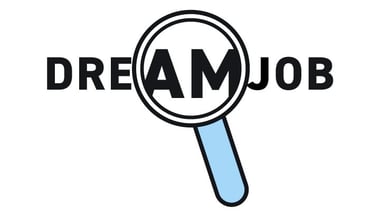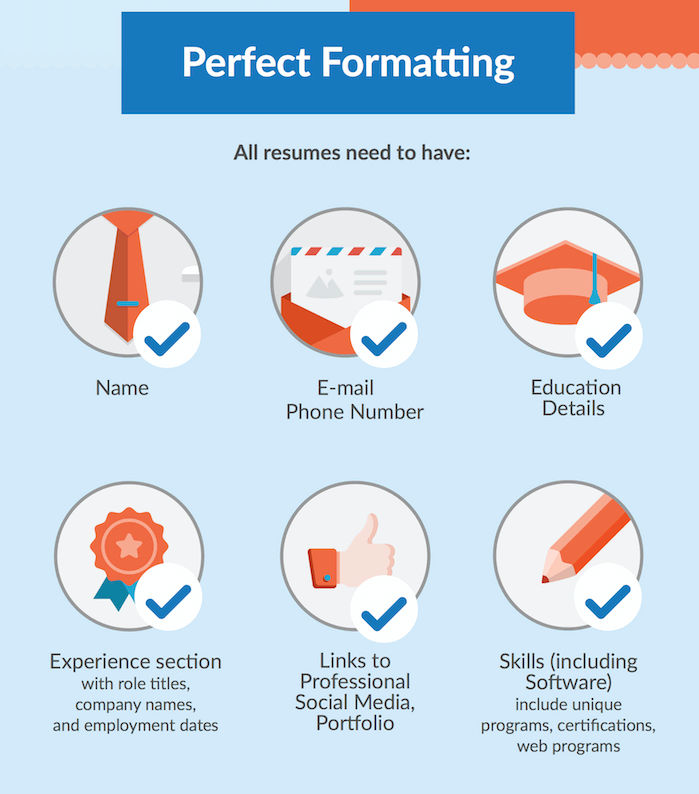If you’re a job seeker you are a hot commodity in the U.S. these days. That’s big news for the hundreds of thousands of Americans who may feel tied to a job that sucks their soul right out of their body.
You know you don’t have to settle, right?
Check out the statistics that are favoring your new job search process:
- According to CNBC, another 250,000 private-sector jobs were added to the U.S. economy in December
- There are 10,000 Baby Boomers retiring every day
- The Balance says the unemployment rate will fluctuate slightly under or above the 4% mark this year
While there are less of the traditional full-time retirement gigs out there, there are a plethora of freelance and flex jobs on the market that allows anyone with a modicum of talent and organizational skills to change their life.
ABC News reported last year “Americans work more than anyone in the industrialized world.” Whether that’s a good thing or a bad thing remains to be seen — but it does mean that finding a job where you’re appreciated and engaged is crucially important. You spend way too much time toiling in your career to not be happy.
This little guide will give you the steps necessary to help find the job you deserve.
Loving Your Work This Year
/Emotional_Intelligence.jpg?width=639&height=364&name=Emotional_Intelligence.jpg)
Step One – Cutting the Cord
The first step toward a dream job is to psych yourself into taking the plunge into the search. Many times it takes a lot of bravery to consider leaving a “sure thing” job for the great unknown that is today’s job market. When you believe that it’s time to consider other options, recognize that your dream job isn’t going to drop into your lap. It’s going to take time and effort to land in a better place.
The Bureau of Labor Statistics reports that the fastest growing jobs between now and 2026 include:
- Jobs in the alternative energy sector, such as solar cell installers or wind turbine techs
- Healthcare jobs like personal care or physician assistants
- Tech geeks including Data Analysts and Software Developers
As you’re thinking about your next big adventure, be deliberate in considering the future of the work you’re doing:
- Are you in one of the jobs that the rise in technology automation will eventually eliminate?
- Are there other types of jobs that you’d like to try, but simply need more training?
- Will your current job pay for training that will help you take the next leap?
- Is there a way to monetize what you love to do?
These are all great questions that will help you move to the point where you’re ready to finally cut the cord to your old job.
The second step toward finding your dream job is to strategize your way to the Next Big Thing.
Step Two – Strategize for the Next Big Thing
/Strategy.jpg?width=639&height=359&name=Strategy.jpg)
The first exercise when mapping out your job quest is to figure out what you liked about your current job and what you want to avoid in the next one. This will help clarify your thinking about the work environment you’re seeking.
Next, begin to consider your skills in an objective fashion. While your job-related skills such as, “Proficient in Visual Studio” are important, we want you to sit down and make two lists. One, list hard skills that are specific technical or work-related expertise that help you do the job. The second list should be of soft skills.
Soft skills are the intangibles in the job that make you good in a team setting.
For example, soft skills include:
- Good problem solver
- Adaptable
- Organized
- Upbeat and positive
- Strong work ethic
- Great communicator
- Confident
- Team player
- Can handle and adapt to constructive criticism
- Hits deadlines and works well under pressure
In preparation for your first interview, start to think about these softer job skills and begin to jot down stories that illustrate them. Many times interviewers ask you to, “Tell me about a time when you…” as a way to ferret out these skills.
You can start to plan for these tricky questions by using this exercise. Trust us. You’ll feel a lot more prepared and confident for your next interview by taking the time to write this all down.
Step Three – Updating the Rez
/Improve%20Your%20Career%20Network.jpg?width=639&height=359&name=Improve%20Your%20Career%20Network.jpg)
The first exercises were designed to help you get your head in the right space for moving on. Now you should feel a stronger sense of purpose for what you’re trying to accomplish. Step three is revamping your resume and LinkedIn profiles to reflect the strengths you’ve discovered in yourself.
Looking at your resume with an objective eye may require the help of a professional. Or, look around you. Do you have friends in your social network that can privately take a look at your CV and make suggestions to improve it? Many libraries and career centers offer free resume advice or classes and of course, there are all kinds of services online that can help — you can start with this handy guide.
Here’s another tip: You should always tailor your resume to fit the job you’re applying for. It’s possible you might have two or more resumes depending on the type of job you’re searching for. In fact, if you slightly tweak the resume to fit the job you’re applying for every single time, it could give you a competitive edge.
The point here is that a one-size-fits-all resume from the more experienced job candidate may not be enough, depending upon what you’re looking for.
So, what makes a good resume? Here are some suggestions:
- One page is usually all you need.
- Go for a nice, clean resume in 11 or 12-point font and with .7 margins.
- At the top, put all of your contact information so the Recruiter doesn’t have to hunt for it. Include your name and the city you’re living in, phone number, and a professional email.
- Eliminate the personal objective statement — the employer already knows your goal is to work for them.
- Next, add a summary of hard and soft skills. Try to use keywords that mirror the job you’re applying to. That way if the HR team is using technology to search through resumes, you have a better shot of rising to the top.
- The next section should have prior work experience highlighting accomplishments — not what your job duties were. Use action verbs that quantify your success. If you’re a salesperson what was your close ratio? If you were in retail, what was the sales volume of your store? Writers should list the number of articles they submit each week and their click-through rate.
- Use bullets and concise language to make it easy to read.
- Put your educational credentials at the bottom unless you're a very recent grad.
Don't Forget: Always have a second or third set of eyes to review what you’ve written. Run the copy through Grammarly or some other spell and context-checker to make sure you’ve eliminated every redundant word or typo.
If you’re having trouble fitting all of your experiences onto one page, make sure you have the most bullets under the most recent job. Jobs from 10 years ago may not even need to be listed, but if they are you can probably skip the bullets.
Step Four - Update LinkedIn
/How%20to%20Nail%20a%20Phone%20Interview%20Blog.jpg?width=639&height=364&name=How%20to%20Nail%20a%20Phone%20Interview%20Blog.jpg)
When you have your resume in the best format possible, it’s time to take your brand to social media. LinkedIn is still the best professional site for networking your way to the next job. USA Today recently shared some insights for improving your LinkedIn profile. However, here is our caveat: You want your brand to carry over to LinkedIn from your resume, presenting a unified front between the two documents.
You should also:
- Make sure you have a professional header and thumbnail photo on your LinkedIn profile page.
- Add a tagline that also fits your skills and the type of job you’re looking for. Try to keep it at less than 50 characters. For example, “Award-winning Sales Closer,” or “UX-Savvy Graphic Designer.”
- Your job summary should be as concise as your resume — don’t make it too long.
- Like your resume, update your profile keywords so that you can begin to show up in recruiter searches for appropriate jobs.
- Revisit your profile regularly to update it.
- When you’re ready, change the account settings to reflect, “Let recruiters know you’re open to opportunities.”
Once LinkedIn is up-to-date, it’s time to start searching for your dream job.
Step Five - Setting Your Targets
/Ultimate_Guide1.jpg?width=639&height=364&name=Ultimate_Guide1.jpg)
Start by targeting your job search. There are two ways to do this:
- The old “carpet bombing” approach that simply flails away at job listings en masse.
- The more targeted precision applications that are informed by your pre-work and individually tailored to the company and job description. These typically give you more bang for the buck.
Work smarter by narrowing your job search to a handful of carefully selected opportunities. By taking the time to craft a smart, interesting cover letter, and then tweaking your resume ever so slightly, the odds will “be ever in your favor.”
Using job sites like LinkedIn and Glassdoor will be helpful to your search. What’s even better? Establishing a relationship with a professional Recruiter. The team at Artisan Talent typically finds out that the job is going to be posted well before the ad is placed. Our job is to stay in touch with companies so we know who’s hiring — and when they’re going to do it. Both LinkedIn and your Recruiter are great networking tools that you can leverage.
Another important point is that your work with a Recruiter should be free. The client pays our fees. This provides an excellent no-cost resource for job seekers.
How to Target Your Job Search
As you’re targeting where to send a resume, consider some of the following:
- Where is the company located and what kind of a commute will you have?
- Take a look at their Glassdoor ratings. Do their employees seem happy?
- Use a search engine to see what the market is saying about the company.
- Search LinkedIn to find out who is currently working for the company you’re targeting. The six degrees of separation rule means it’s likely if you don’t know someone that’s working there you have a friend who has a friend…LinkedIn is a great tool for figuring out these connections.
- Make sure you’re organized about what you’re applying for. Keep a spreadsheet where you applied and copy the job description to a file. That way if you get the interview but the ad has disappeared, you’ll still be able to go in well prepared.
Step Six – The Interview
/Hiring%20Project%20Based%20Creative%20Talent.jpg)
Speaking of the interview, it’s going to be important that you take the time to study up on the company you’re interviewing with.
Always ask lots of questions during the interview. Always remember that you are interviewing them as much as they are you.
Here are some great questions to ask during the Hiring Manager:
- Why has the role opened up?
- Who would I be reporting to?
- What are the top three traits that would make me successful on the job?
- Are there any goals or metrics for the job that I should be aware of?
- What is the company culture like?
- What would a typical day be like?
- What’s the most important thing I would accomplish in the first 90 days?
- How long has the interviewer been with the company and what does he or she like about working there?
- What advancement opportunities are available?
- Where will the company be in the next five years?
Always end by trying to close the deal. Try asking what the next steps are and do they have any feedback on your resume or interview.
Don't Forget: Always send a thank you after the interview has concluded.
One Final Word about Living the Dream
This big career switch may also mean that you decide to try an alternative to the 9–5 full-time role. It may mean you search for a position that offers remote work. No matter what the goal for your next position, consider Artisan Talent a networking resource that will help you land the job you’ve always wanted. Contact us today. We can help.
Want to get started? Check out our searchable job board.




